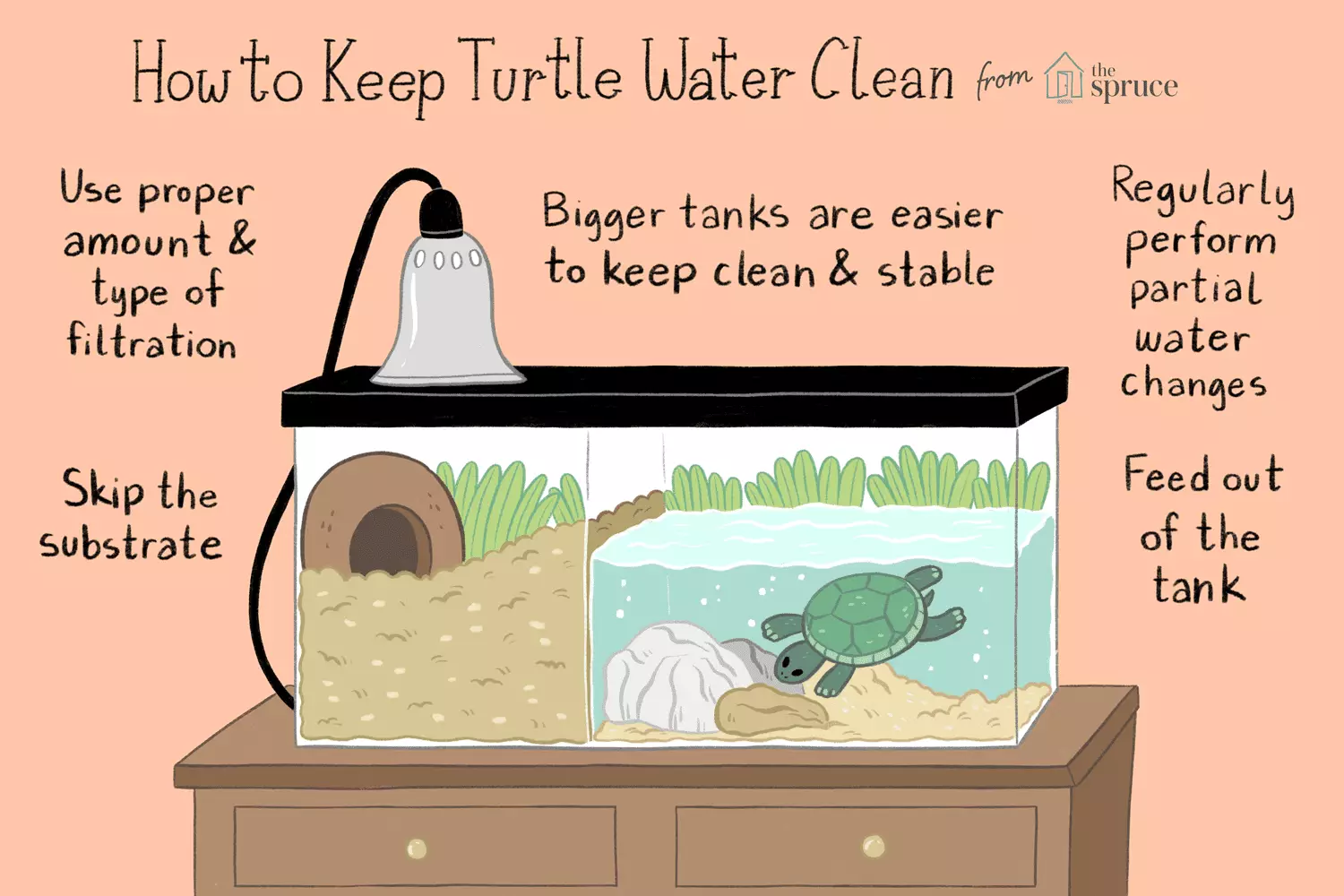Maintaining a healthy environment for aquatic turtles, such as red-eared sliders, is paramount for their wellbeing. These reptiles thrive in clean water, a fact that cannot be overstated. However, the inherent habits of turtles—especially their tendency to defecate in their aquatic habitat—present unique challenges in maintaining water quality. In addressing these issues, owners must understand the dynamics of a well-balanced aquatic ecosystem to promote the health and longevity of their shelled companions.
Aquatic turtles, although generally more resilient to water quality fluctuations than fish, still require a high standard of cleanliness in their living environment. Turtles can be susceptible to the adverse effects of harmful chemical buildup in their tanks. In timeworn systems, waste breakdown can lead to the formation of ammonia, nitrites, and nitrates—compounds that can disrupt turtle health if not carefully monitored. The challenge lies in recognizing the early signs of water quality deterioration, which manifest as murky or foul-smelling water.
A reliable assessment of water conditions can be facilitated through the use of test kits available at pet supply stores. These kits measure critical levels of ammonia, nitrites, and nitrates, empowering owners to take timely corrective actions. By adhering to the instructions provided with the kits, owners can establish safe thresholds for these chemical levels, ensuring that their turtles inhabit a safe and balanced environment.
Understanding the Nitrogen Cycle
The nitrogen cycle is a crucial concept in the management of any aquarium, including turtle tanks. Initially, fish waste and uneaten food decompose, releasing ammonia—a toxic compound for turtles. However, beneficial bacteria in the tank and its filtration system play a vital role in converting ammonia into less harmful substances. The process involves two stages; ammonia is first converted into nitrites by one type of bacteria, which are subsequently transformed into relatively benign nitrates by another.
This cycle can take weeks to establish in a new tank. During this period, it is critical to closely monitor and manage water quality, as spikes in these chemical levels can lead to unforeseen issues. If your tank is older or the balance has been disrupted—potentially by overfeeding or excessive waste—proactive measures such as immediate water changes become necessary.
Managing pH Levels
The water’s pH level, which gauges its acidity or alkalinity, also plays a role in turtle care, although it is less of a concern than harmful waste products. Most red-eared sliders thrive in a pH range of 6 to 8. Regularly testing this aspect helps owners keep an eye on any drastic chemical changes within the tank that could signal problems. For those aspiring to adjust pH levels, pet stores provide safe solutions for both raising and lowering pH, allowing for controlled corrections when necessary.
Another topic that sparks debate among turtle enthusiasts is whether to dechlorinate tap water before introducing it to a turtle tank. While turtles are generally more tolerant to chlorine than fish, exposure can still be irritating—particularly to their sensitive eyes. Furthermore, chlorine can disrupt the natural life cycle of beneficial bacteria crucial for breaking down waste. Therefore, using a water conditioner to remove chlorine, chloramine, and ammonia is often recommended.
For city dwellers, where chloramine is used in water treatment, opting for a conditioner capable of neutralizing both chlorine and chloramine becomes necessary. Unlike chlorine, which dissipates after 24 hours, chloramine remains in the water, thus requiring removal for a healthy tank environment.
The size of your turtle tank significantly influences water quality maintenance. In a smaller tank, the concentration of waste is much higher, leading to rapid deterioration of water conditions. Larger tanks, on the other hand, dilute waste products more effectively, making it simpler to maintain a stable and clean environment. As a general rule, a guideline of 10 gallons of water per inch of turtle is often recommended.
Choosing the appropriate filter is vital in this regard. A filter rated for two to three times the capacity of your tank is advisable, ensuring that the system can handle the removal of waste and harmful by-products efficiently. Familiarizing oneself with different filtration types can help owners make informed decisions tailored to their specific setup.
Water Change Strategies
Routine water changes are a cornerstone of effective turtle care. Specifically, partial water changes on a weekly basis can significantly enhance water quality. Factors such as tank size, number of turtles, and feeding practices should inform your change schedule. For ease of maintenance, using a gravel vacuum or siphon can simplify the process while avoiding direct mouth priming, which poses health risks.
Another method to streamline cleaning involves feeding turtles in separate containers to minimize waste within the tank. Utilizing water from the main tank can help regulate temperature during feeding, exemplifying an efficient approach to dual maintenance tasks. While this method requires more effort, it may be particularly beneficial when offering messier foods.
Ultimately, responsible turtle ownership demands attention to water quality management. By understanding the processes that impact their environment and utilizing the right tools, owners can ensure their aquatic pets lead healthy, happy lives.

